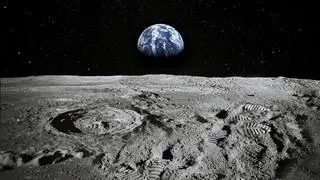NASA’s Mars rover Curiosity has found tantalising clues that life may have once existed on the Red planet, but scientists said it was too early to make much of the first soil analyses.
Scientists found traces of carbon in several compounds detected by the rover’s Sample Analysis at Mars instrument.
They, however, do not yet know if the carbon — a key building block for life — is contamination from Earth, was delivered to Mars by organics—rich asteroids, or arose on Mars itself.
The carbon, if indigenous, could be an indicator of geologic or biological activity, the Discovery News reported.
“We’re not really sure of where it comes from right now,” the mission’s lead scientist John Grotzinger said during the American Geophysical Union conference in San Francisco.
“Just finding carbon somewhere doesn’t mean that it has anything to do with life, or the finding of a habitable environment,” he said.
Life, as we know, needs three basic ingredients to evolve — water, a energy source and carbon. Other building blocks include sulphur, oxygen, phosphorous and nitrogen.
Curiosity, which is four months into a planned two-year mission on Mars, already has turned up evidence that its landing spot on the floor Gale Crater, was once covered in water, the report said.
Minerals in the soil analysis also show a history of chemical interaction with water. Curiosity contains an on-board chemistry laboratory to find possible ingredients for microbial life, the environments that could have supported it and places where life could have been preserved.
Sample Analysis at Mars, till now, has detected signs of an oxygen-chlorine compound, possibly perchlorate, and traces of carbon-containing chlorinated methane compounds.
Scientists specifically chose dry, fine-grained sand believed to be typical to the Martian surface for Curiosity’s first soil analysis.
“It’s not unexpected that this sand pile would not be rich in organics. It’s been exposed to the harsh Martian environment,” said lead SAM scientist Paul Mahaffy, with NASA’s Goddard Space Flight Center in Greenbelt.
“What we’re seeing here are some very simple compounds, and it’s entirely possible they’re coming from the very reactive chlorine that’s released and picking up carbon from somewhere. We have to try to understand where that carbon is coming from,” he said.








Comments
Comments have to be in English, and in full sentences. They cannot be abusive or personal. Please abide by our community guidelines for posting your comments.
We have migrated to a new commenting platform. If you are already a registered user of TheHindu Businessline and logged in, you may continue to engage with our articles. If you do not have an account please register and login to post comments. Users can access their older comments by logging into their accounts on Vuukle.